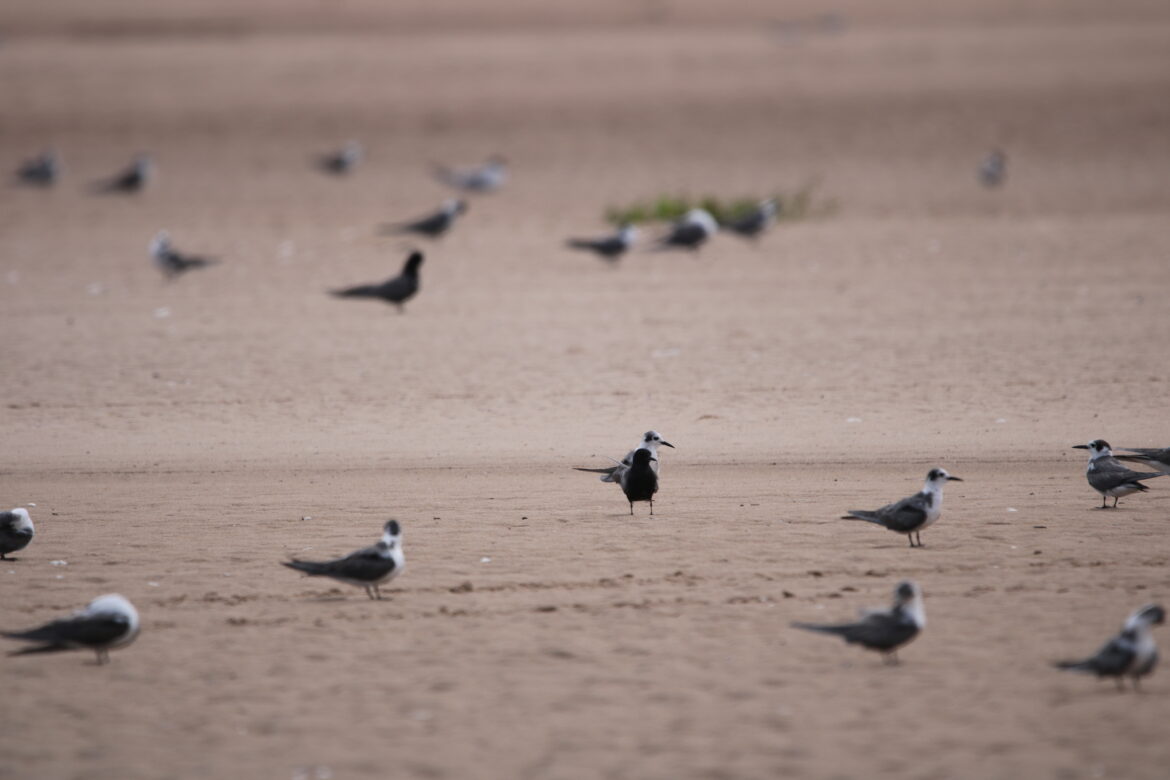
Photo of Black Tern flock observed roosting at mudflat in both non-breeding and breeding plumage. Photo taken June 24, 2024, at Sargent Beach, TX by Taylor Bennett.
by Taylor Bennett
Here at Gulf Coast Bird Observatory, our beach-nesting bird season is winding down. We’ve been monitoring Wilson’s Plovers and Least Terns along the upper Texas Coast through their breeding seasons, ending in late July. The two main sites we monitor are Matagorda Beach and Sargent Beach in Matagorda County. Along with our beach-nesting birds, we tend to observe other species as well. One such species is the Black Tern.
Black Terns are small terns that migrate along the Gulf Coast during the summer months and breed in the Northern U.S. and Canada. They travel in large flocks and prefer wetland habitats. We have observed them both at Sargent Beach and Matagorda Beach in the back-beach areas.
Their breeding plumage is what gives them their name because they have a black head, belly, and body, blackish pink legs, and a slender black bill. The only parts that are not black are under their tail and wings, which are gray. During the non-breeding season, the Black Tern’s body and wings are a lighter gray and their head is mostly white with a distinct dark ear spot. During our surveys, we have observed Black Tern in both their nonbreeding and breeding plumage and even in their transitioning phase where they are both black and white at the same time.
Despite their goth-like appearance, Black Tern is more extroverted than introverted. They are incredibly social and like to gather in large groups during roosting and feeding. They even perform group courtship flights. There can be tens to thousands of birds in one flock.
One nickname for the Black Terns is “marsh terns” because they prefer roosting, feeding, and breeding in marshes or wetlands. They mainly feed on small fish and insects but have been observed feeding on other things like crayfish, frogs, and lizards. They capture their insect prey by swooping and feeding on them like swallows and nighthawks.
Black Tern nesting habits are a bit different than other tern species. Instead of nesting in large colonies close together, they prefer to nest in loose colonies with a few dozen nests spread out at least 30 feet apart. Most tern species also tend to nest on the ground on sand or oyster shell islands. Black Terns, however, build nests on top of floating dead vegetation. Both males and females help build the nest. The female can lay up to three eggs which are camouflaged and porous to help them survive their moist environment.
Due to the drainage and conversion of wetlands, the population status of the Black Tern is in steep decline. As always, please share the beach and give them plenty of space when observing them. On behalf of Gulf Coast Bird Observatory, thanks for reading.

